Internal Salmon Temperature
When is salmon done?
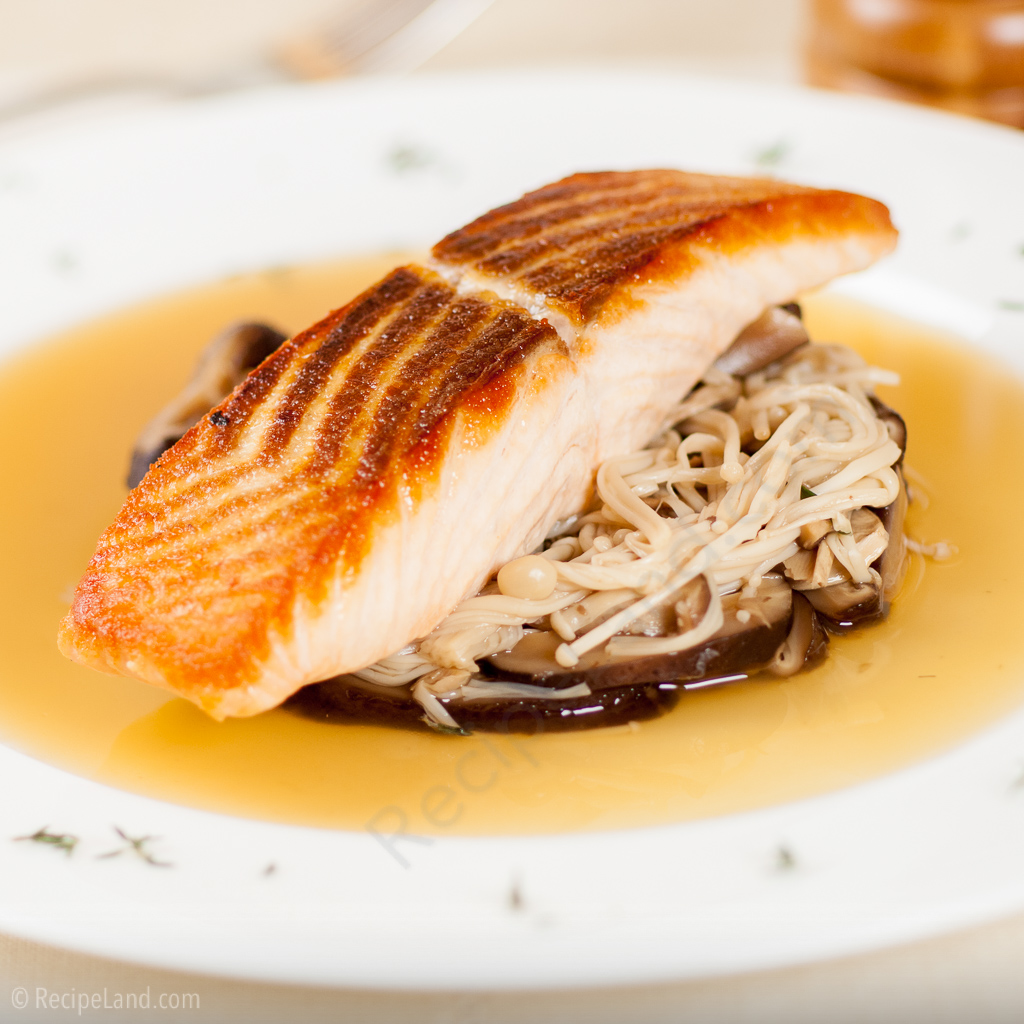
What is the perfect internal temperature to cook salmon to? Find out how long to cook salmon, and how to tell when salmon is done.
Contents
There are many ways to enjoy salmon, but how do you know when it is fully cooked? Some like it raw, as in sushi. At the same time, others prefer their fish to be cooked completely through. To obtain a moist, silky, translucent result, on the other hand, read on!
To determine the perfect cooking temperature for salmon, consider the fish's thickness and your guests' preferences. Which option would you prefer: a warm, firm, flaky, or a silky, moist one with a translucent center?
USDA-recommended salmon cooking temperature
The US Department of Agriculture recommends cooking fish to an internal temperature of 145 °F (62.8 °C)1. While following this method ensures that the fish is fully cooked, there is a possibility that it may end up as dry as the arid Sahara Desert.
Many find that at that temperature, the salmon will be overdone. The internal temperature continues to rise once you remove the salmon from the heat, resulting risking the dreaded over-cooked fish.
Perfect salmon temperature
To achieve perfectly juicy and tender salmon, America's Test Kitchen recommends cooking it to approximately 125 °F (52 °C). Cooking to this internal temperature will produce an incredibly delectable texture with a gentle flakiness and a glossy, translucent appearance.
Here at the RecipeLand.com kitchens, we prefer to cook our salmon to just 130 °F (55 °C), and the results are just about perfect after a 5-minute rest.
The center should still be slightly translucent and moist, but the salmon will easily flake along the muscle fibers.
What temperature is salmon ready?
Use the salmon temperature guide below according to preferences.
Fully Cooked Through: As noted above, the USDA says the thickest portion of your salmon filet, steak or side should attain an internal temperature of 145 °F (63°C). If one follows these guidelines, your fish will no doubt be fully cooked, with no raw or silky interior. That is presumably appropriate if you're feeding a crowd with different food preferences. However, make certain to avoid increasing the internal temperature beyond this level. If you do, the salmon will become tough and dry, more like the awful salmon you get on airplanes than the restaurant-quality salmon you can cook at home.
Medium-Rare (Farmed): If you prefer medium-rare salmon and prepare farmed filets (most Atlantic salmon sold in America), cook until the middle is 125–135°F (52-57 °C).
Medium Rare (Wild): If you're cooking wild salmon, medium-rare is between 120 and 130°F (50-54°C). Why the difference between wild and farmed salmon? Wild salmon get more exercise, resulting in more connective tissue. This additional connective tissue means that muscle fibers may end up dry or tough if overcooked. Furthermore, some types of wild salmon are leaner than farmed salmon. This means they have less fat, which makes the end product more likely to toughen at higher temperatures—cooking wild salmon to medium-rare results in a more delicate and tender texture, bringing out the natural subtle and unique fresh flavors.
Additionally, cooking wild salmon to medium-rare allows for a more delicate and tender texture, enhancing the natural flavors of the fish. It is essential to monitor the temperature closely to avoid overcooking and preserve the unique qualities of wild salmon.
What temperature to cook salmon in the oven?
The temperature for baking salmon in the oven can vary based on your preference and the recipe, but a general guideline is to preheat your oven from 400°F (200°C). Some recipes may suggest a slightly lower temperature, around 375°F (190°C), to ensure a more moist and tender salmon. Remember to always check the internal temperature of the salmon for best results.
How long to grill salmon?
Grilling: Grilling salmon is a popular method that imparts a smoky flavor to the fish. Preheat the grill to medium-high heat and lightly oil the grates. Place the salmon fillets or steaks on the grill (skin-side down if cooking with the skin), and cook for about 4-6 minutes per side, depending on the thickness of the fish. The internal temperature should reach the desired level according to your preference.
How long to bake salmon?
Baking salmon is a simple and convenient method. Preheat your oven to 375 °F (190 °C). Arrange your salmon on a baking sheet lined with parchment paper or aluminum foil. Bake for about 12-15 minutes or until the salmon is cooked to your desired temperature.
How long to broil salmon?
Broiling salmon is a quick method that results in a slightly charred exterior and a moist interior. Preheat the broiler and place the salmon on a broiler pan or a baking sheet that you have lined with aluminum foil. Broil for about 4-6 minutes per side, depending on the thickness of the fish.
How long to pan-sear salmon?
Pan-searing salmon creates a crispy skin and a tender interior. Heat a skillet over medium-high heat and add a small amount of oil. Place the salmon, skin-side down, in the skillet and cook for about 4-5 minutes. Turn over the salmon and cook for an additional 2-3 minutes or until the desired internal temperature is reached.
An instant-read thermometer is one of the most essential tools you can have in your kitchen when cooking salmon (or any meat). While cooking salmon to a specific temperature is important, it can be challenging to tell when the fish has reached the desired temperature without a thermometer. Investing in an instant-read thermometer can help you achieve perfectly cooked salmon every time. With this tool, you can easily monitor the internal temperature, ensuring that your salmon is cooked to your desired level of doneness. Plus, it can be used for many other types of food, making it a valuable addition to any home cook's toolkit.
Albumin
Have you ever noticed that white, sometimes foamy, substance coagulates on the surface of your salmon? It's called albumin.
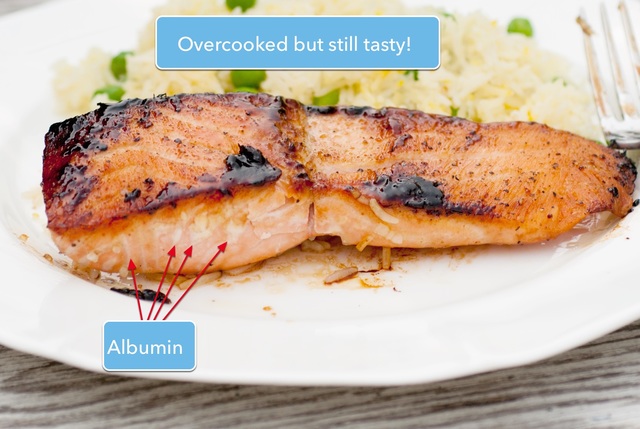
Albumin is a protein that is pushed out of the muscle fibers of the fish as it cooks. It can collect on the edges and surface of the salmon. Overcooked salmon, especially when poached and canned salmon are particularly prone to this effect. However, even perfectly cooked salmon can form some of albumin on the surface.
The best way to avoid the white stuff is to cook your salmon to the perfect internal temperature.
Some tips to curtail the formation:
- bring the fish to room temperature before cooking
- glazing the salmon helps keep albumin formation in check
- cook just until the center of the salmon is translucent and no more
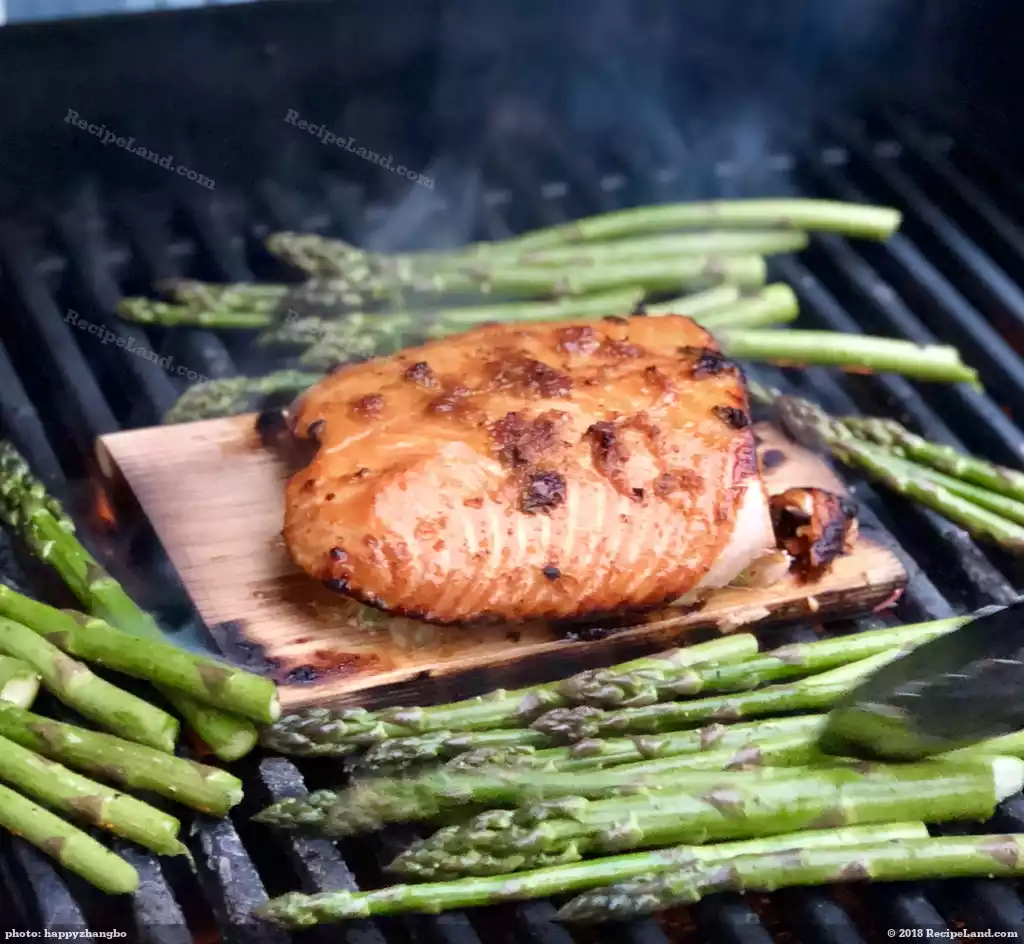

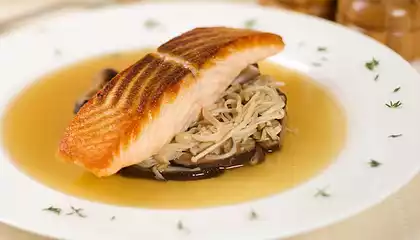
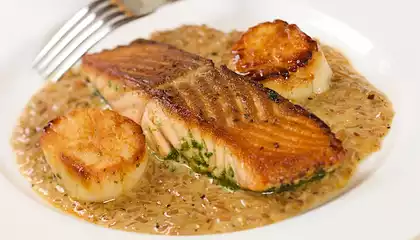
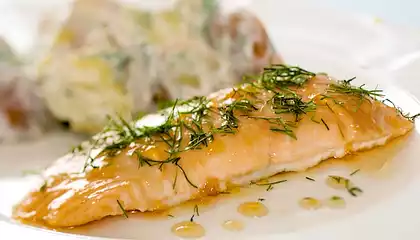
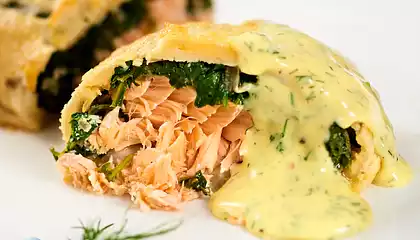

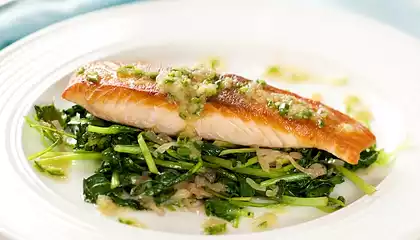
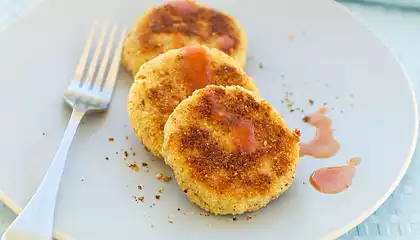

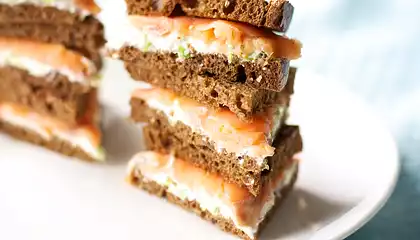

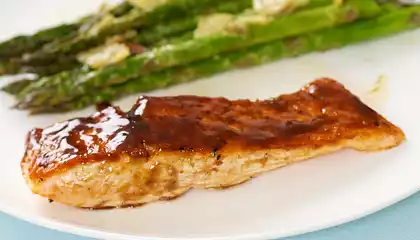
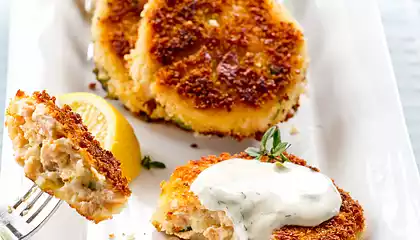
Comments
Brine the salmon and there will be little to no Albumen
yeah this is in fact one of the best informative fact that i have ever read. Salmon is one of the fish used commonly...so your blog is indeed a useful tip for readers like me.
Thanks!
there is a typo in your opening line, "The USDA recommends cooking fish to an internal temperature of 145 degrees F (62.8 degrees F)." no body likes to proof.
You still haven't corrected the typo in the opening line. It should read "...62.8 degrees C..."
Thanks so much for your comment! I did not realize that it was F instead of C, even though I read it over and over again. Appreciated your comment very much :)
great
The word "no body" in the comment "no body likes to proof" is spelled wrong. Nobody is one word. Nobody likes to proof!
"No body likes to proof" ...
Nobody*.
And "proof" what? You mean _proof read_ ?
Way to be a grammar Nazi while failing the subject yourself.
:-p
Also, people should be aware of something known as "caching". In order to save system memory (RAM) and increase load times a server will not update or refresh the contents of a website for an amount of time specified by the web developer. A user can get around this by deleting this browser cache on their computer. This way the new content will be loaded rather than your browser waiting for the server to tell it that "it's time to refresh the cache".
This is probably why many of you (for some reason ) became unjustifiably irritated that this minor typo was not remedied with unnecessary haste.
I appreciate the post. Helped me a ton with my salmon. And I would tell all the grammar nazis to eat a bullet. So many people who only have time to pick apart something that was meant to help folks. Seriously this world is full of assholes.
I agree.
Funny stuff, everyone! The article is good, but the comments always add so much in the way of information and also humor. Good stuff.
Heyo,
Really great tips and temp suggestions! I appreciate the info from America's Test Kitchen being provided as well, since it gives us a few different options for our preferred sweet spot.
I really enjoy the 125-130° F range as well.
As an aside, toward the end of the page with the bullet list of tips, "glazing the salmon helps check albumin formation in check" may mean to say "help keep albumin formation in check" I believe. It's tough to catch all the little ones, but great info and really well written.
Thank you for sharing =)
You perfect grammar teachers need to get a life. Can you spell boring?
What a bunch of grammar comment police. I learned how to prevent dry and overcooked salmon from this post, then read grammar comments displaying incorrect grammar. Thankfully I have some salmon to cook and enjoy. Peace all!
I find it’s hard to get in the temp range of 125-130 when serving. We take it out of the oven and broil for a few minutes. Then it spikes like 10 degrees F!
I have terrible grammar when it comes to typing so I appreciate a very polite correction, but not a mean one.
Sous vide at 120 F for 45 mins is delicious.
wow, just scrape the white stuff off with your fork and eat your fish.
I love the white stuff that comes out of salmon, chicken, and pork chops!
130F with 5 min rest on the baking sheet worked perfect to get it to 145 in the end.
You guys who are down on the grammar correction people are crazy.
Hello, I will follow your How to cook Salmon. I thank you very much for your time and your knowledge. After cooking my salmon the center is still pink not translucent at 140 F. In future i will cook to 130 F and rest for 5 min. and check the middle for color. Mike
Hi guys.
In the Uk we go for an internal temp between 110f to 125f. But i do like it on the less cook side.
Thanks for the tips! Ain’t got time for no grammer corrections here me got some fish to fry!
never saw a time frame? wth?
I pull my salmon from the ice. at 125 and it usually reaches 140-141 while resting on the sheet pan while I get the rest of dinner plated. It doesn’t overcook that way and comes out moist and tender.
I know this is seven years later but someone who doesn't use capital letters and spells words wrong shouldn't be too critical.
The FDA’s recommendation cooks the fish to a temperature that kills parasites that can be in any meat.
Hahahahaha
Salmon on a cedar plank on the grill is definitely the best.
I know. My salmon still isn't ready after 14 hrs! WTF!
14 hours! You are certain to exceed the food safety standards recommendations.
Cedar-planked salmon is awesome!
My grammar no longer cooks salmon. She died many years ago.
[Thank you for the informative article. Very helpful]